War of attrition is deadly for the US Navy's aircraft carrier fleet
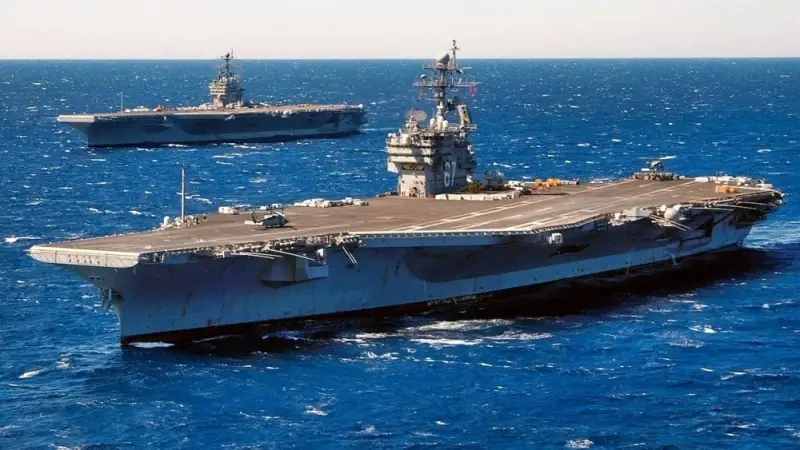
This is not the first time this topic has appeared on our pages, but what should we do if the Americans themselves are actively discussing it? They are like those geese, strange birds, they don’t seem to want war (almost like doves, which are birds of peace), but for some reason they are very actively preparing for it. And, accordingly, they discuss it in full.
In general, of course, they say that if there is a gun hanging on the stage in the theater, then by the end they will definitely shoot someone with it. A classic of the genre, you know.
In the show that American politicians are putting on, excuse me, the whole stage is filled with not only guns, but guns. More than one gun hangs modestly, but eleven I don’t even know what to compare it with...
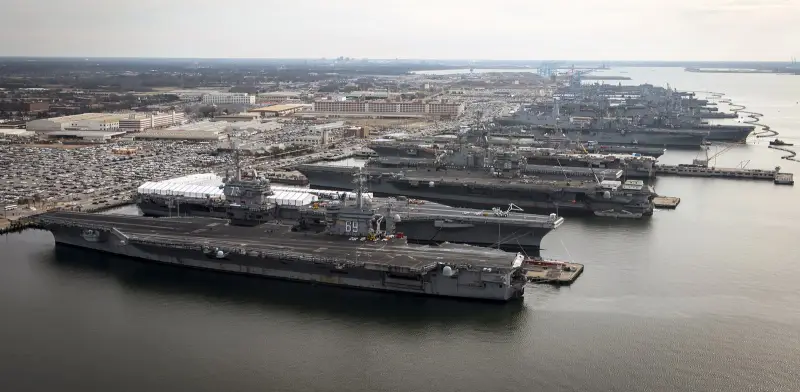
In general, theoretically, the United States has 11 shock clubs in the form of AUG. Formed around eleven aircraft carriers. And all further calculations will revolve around these gloomy flat-deck budget consumers.
Aircraft carriers are the jewel in the crown of every naval fleet, which can have them, that is, contain them. Otherwise, aircraft carriers are able to screw any budget to the bone. Proven by Russian, French and British troughs.
It is believed that expensive but powerful aircraft carriers can change the course of not only a battle, but also an entire conflict. Moreover, in any direction. The US Navy has the largest and most combat-ready aircraft carrier fleet in the world, which is able to condemn almost any country against which it will be used, including the United States if the sentence fails.
As the U.S. press frenzy over a potential war with China or Russia unfolds, there are reasonable concerns about whether the U.S. Navy has enough aircraft carrier fleet.
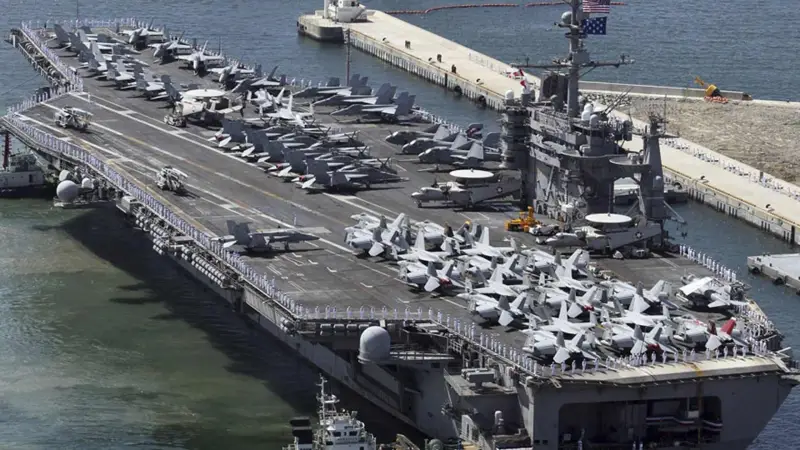
One of the major questions debated in the national security community is whether the U.S. Navy even has enough capabilities to deter adversaries and prevail in a potential conflict.
That is, reading American portals, I begin to understand that on the other side of the world the idea began to come to minds that not only the States, but also the States, can hang things. And then you know, the flight of fancy is simply cosmic. However, let's go in order.
US carrier fleet
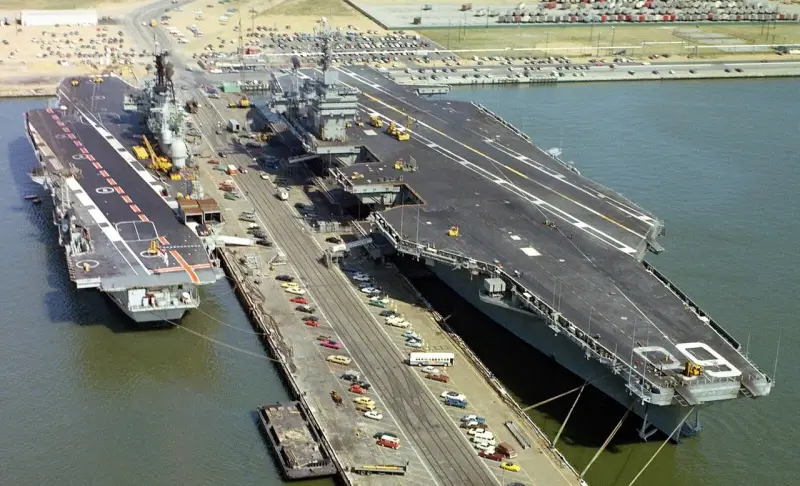
Before diving into the question of whether the Navy has enough aircraft carriers, it first needs to examine the current fleet.
Today, the US Navy operates 11 nuclear-powered aircraft carriers, ten of which are Nimitz-class and one Ford-class. And we already know that in this friendly family, not only is there a black mark, but he who is without sin, let him go first into battle.
The Nimitz class includes USS Nimitz (CVN-68), USS Dwight D. Eisenhower (CVN-69), USS Carl Vinson (CVN-70), USS Theodore Roosevelt (CVN-71), USS Abraham Lincoln (CVN-72), USS George Washington (CVN-73), USS John C. Stennis (CVN-74), USS Harry S. Truman (CVN-75), USS Ronald Reagan (CVN-76) and USS George HW Bush (CVN-77).
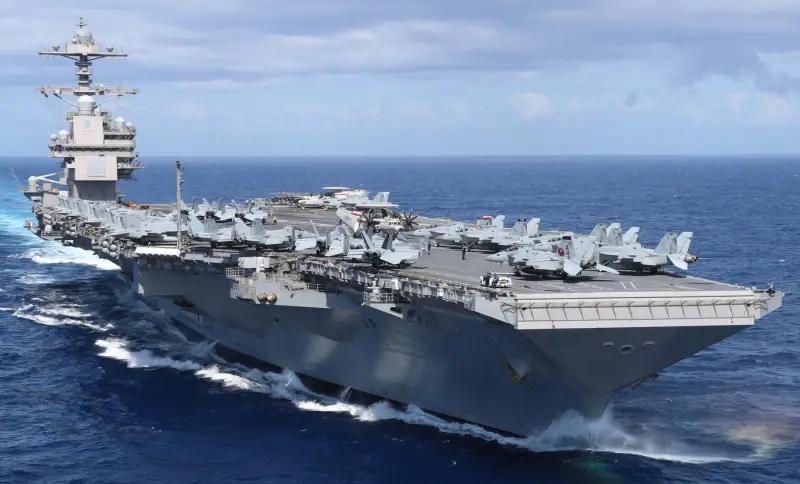
USS Gerald R. Ford, the first and only Ford-class ship, is the world's newest and most modern aircraft carrier. The Navy plans to build a total of 10 Ford-class supercarriers, but the question is in what time frame and how efficiently. We remember how the Ford was built, but the fact that it is still being brought to condition is something the Americans themselves prefer to remain silent about in six languages.
Of course, of America's 11 aircraft carriers, only about half are operationally deployed at any given time. Essentially, the Navy has five or six aircraft carriers around the world on months-long deployments while the rest are at home undergoing maintenance, refitting and training.
Secret carrier fleet
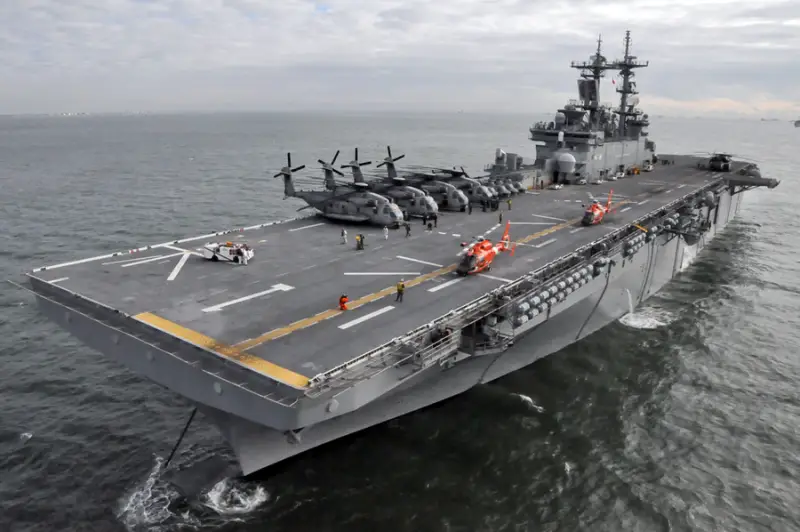
In addition to conventional, “normal” aircraft carriers, the Navy can count on a “secret” aircraft-carrying fleet in case of an emergency. This "secret" fleet consists of amphibious assault ships that can act as light aircraft carriers, each carrying a small number of F-35B Lighting II fighters.
The "B" version of the F-35 has short takeoff and vertical landing (STOVL) capabilities. This special capability allows the F-35B to operate from both amphibious assault ships and aircraft carriers.
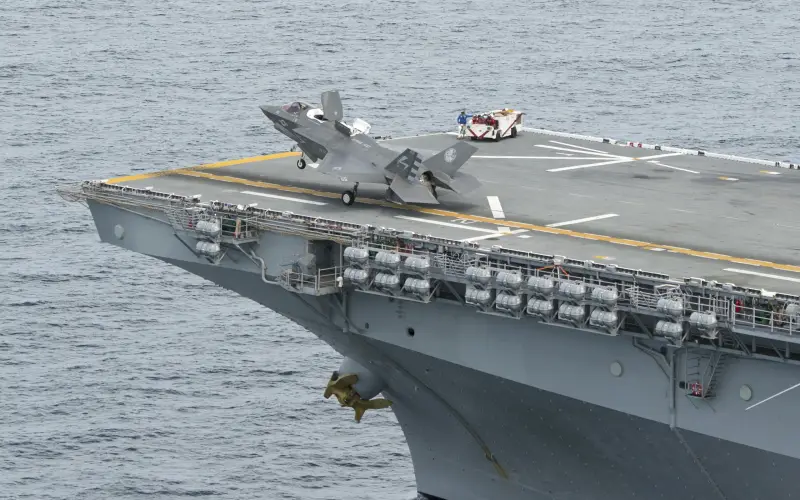
Although small in size compared to the Nimitz and Ford class aircraft carriers, these amphibious assault ships are the same size as many other nations' aircraft carriers. Typically, these UDCs are used by the Marine Corps as floating bases for attacks by helicopters or landing craft.
But, if necessary, they could be converted exclusively into light aircraft carriers and bring additional aircraft to the battlefield. The Navy has used the light aircraft carrier design in the past, so it will be able to adapt quickly if it needs to expand its aircraft carrier fleet.
The US Navy operates nine amphibious assault ships (seven Wasp-class and two America-class). Several more are currently under construction.
Maximum task
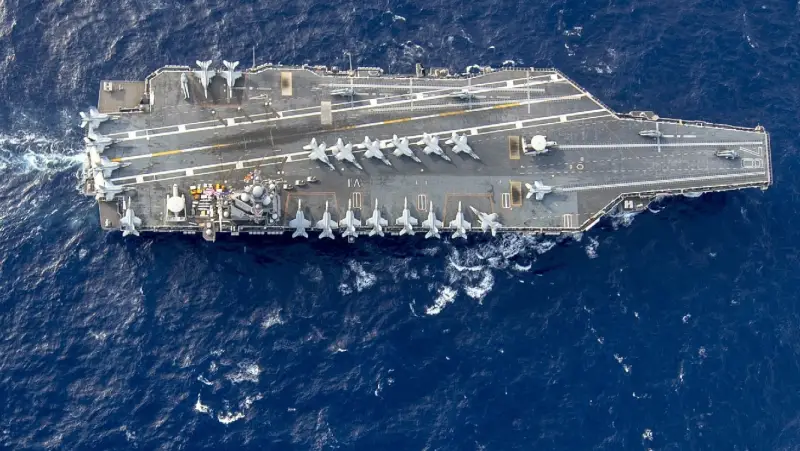
The biggest challenge for the Navy's carrier fleet is demand. With a fixed supply of ships (11 aircraft carriers), but an ever-increasing demand for them due to geopolitical challenges. Tensions with China in the Indo-Pacific region, the war in Ukraine and the conflict in Gaza are just some of the current challenges that require the presence of one or more aircraft carriers.
Let's start with why aircraft carriers are in such high demand in the plans of the US military?
The answer is simple, but... Firstly, aircraft carriers are in high demand because of the capabilities they provide to the tactical and operational commander. More broadly, aircraft carriers are arguably the best non-nuclear military tool for power projection, and their strategic utility is invaluable to policymakers.
For example, following the Hamas terrorist attacks on Israel last October, the Pentagon deployed the USS Gerald R. Ford aircraft carrier and its battle group to the Eastern Mediterranean as a show of support for Israel and a show of force against Hamas, Iran and any other malign actors in the region. Similarly, in February, the US Navy said it would deploy five aircraft carriers to the Indo-Pacific region, even if only briefly, as a show of force against China and a morale booster for US allies and partners in the region.
The question here is solely how useful this deployment was for Israel.
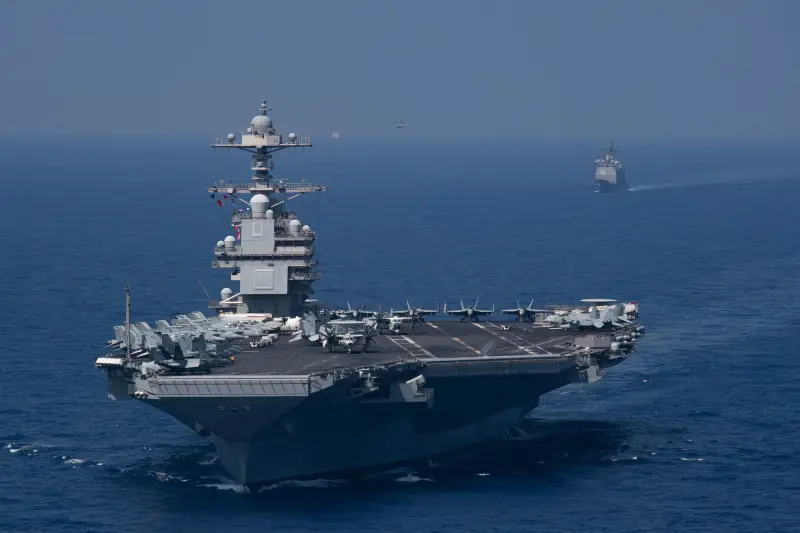
The US Congress has long recognized the military and foreign policy value of an aircraft carrier and passed legislation that requires the Navy to maintain a permanent fleet of 11 aircraft carriers. However, this number has fluctuated between 10 and 12 over the years as Congress passed special legislation allowing the Navy to have more or fewer ships for a certain period of time.
If necessary, the US Navy could likely deploy most of its carrier fleet to counter the threat. If we are talking about some kind of external threat, but lately everything is somehow more about the fact that the United States itself will create a threat somewhere in the vastness of the Asia-Pacific region.
Moreover, the US military relies on a vast and reliable network of alliances and partnerships that make this much easier.
Thus, in the event of a potential near-peer conflict with China or Russia—or even both—the U.S. Navy's carrier fleet would be supplemented by allied warships. Although they are not as capable or large as the US Navy's aircraft carriers, these aircraft carriers and allied aircraft carriers (there are nine in total) could be an important addition to the fleet and help it achieve its goals.
American legislators are well aware that aircraft carriers are not cheap (the last aircraft carrier USS Gerald R. Ford cost $13 billion and the fuss with it is still not finished). They are also more vulnerable to new technologies such as hypersonic missiles and submarines. Taking cost, current fleet size, and likely allied contributions into account, the Navy has the aircraft carriers it needs to meet current and future challenges.
After all, bigger doesn't necessarily mean better.
However, it is a very real possibility that the US Navy may not have enough aircraft carriers to accomplish its missions. Moreover, even with the help of allies. Here it is worth recalling the condition of both the British and French ships (the level of the Admiral Kuznetsov in terms of combat readiness), and these, I note, are the best ships of the alliance after the American ones! I don’t even want to talk about Italian ships; the only ships that are worth anything are Japanese ones.
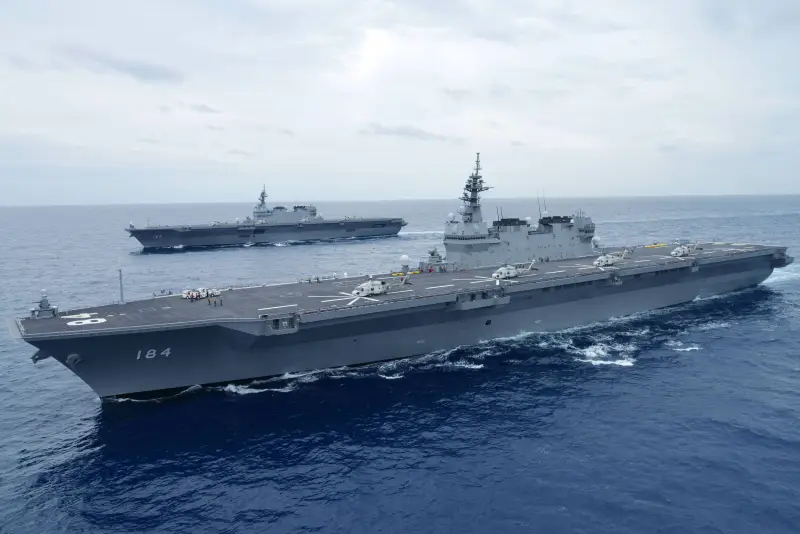
The US Navy faces challenges in maintaining its current fleet of aircraft carriers, stretched thin by global deployments and constrained by high construction and maintenance costs. With 11 nuclear-powered aircraft carriers, but only about half of them fully operational at any time, the US Navy is assessing its future strategy under financial and logistical constraints...below average.
The commissioning of Ford-class aircraft carriers is aimed at modernizing the fleet, but the fleet will not be satisfied with a single aircraft carrier. The Navy is also considering small aircraft-carrying ships as a potential alternative.
Does the US Navy have problems with aircraft carriers?
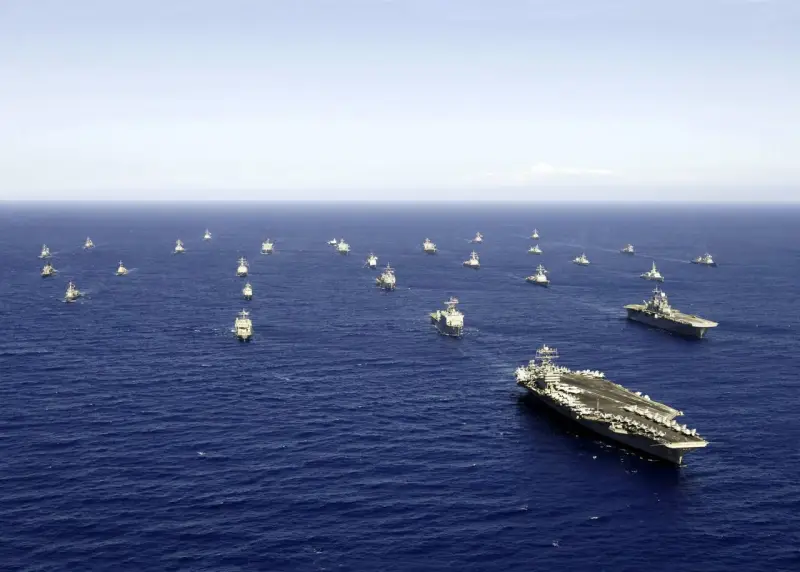
Aircraft carriers remain the largest capital warships in the world today, and in fact there are quite a few of them. Including amphibious assault ships (LHA), there are currently 47 active aircraft-carrying ships in the world, operated by fourteen navies. More than a third of them are in service with the US Navy.
Additionally, the US Navy operates two America-class LHAs out of a planned 11, as well as seven Wasp-class ships, and an eighth was severely damaged by fire and subsequently decommissioned in 2021.
The current American fleet of Nimitz-class aircraft carriers will also be decommissioned and replaced on a one-to-one basis by future Gerald R. Ford-class aircraft carriers, which will be more modern and seemingly not very (funny, yes) expensive to maintain. In its 2018 report to Congress, the Navy said it intends to retain 12 aircraft carriers as part of its 30-year warship acquisition plan.
The current plan is for Ford-class carriers to replace Nimitz-class carriers on a one-to-one basis over the next four decades. However, it is just as likely that the United States Navy will never replace each of its Nimitz-class aircraft carriers, but may instead try to create smaller warships that can still do the job.
It is very difficult to even imagine the mountain of money that will be required to implement these plans.
Are there enough aircraft carriers?
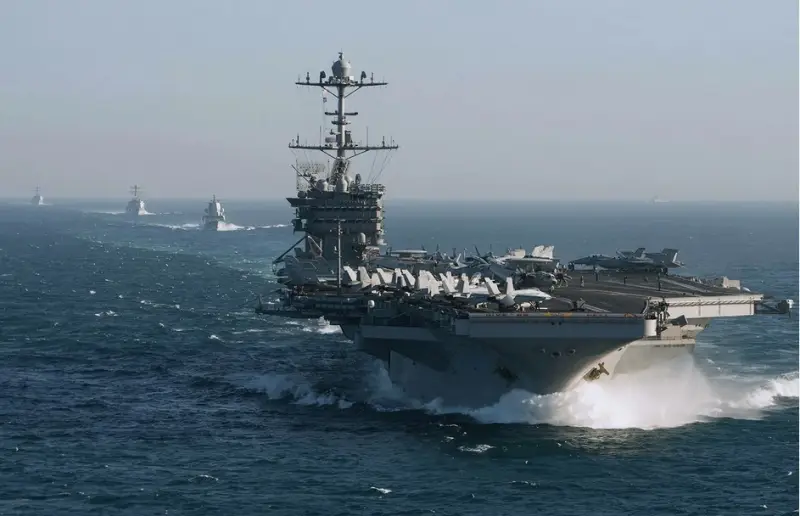
The question likely being considered by US naval strategists is whether there are enough aircraft carriers in service right now. The short answer is that the US carrier fleet, despite its size, is spread out and is not like a clenched fist, but rather an outstretched fist.
The Nimitz-class aircraft carrier USS Dwight Eisenhower (CVN-69) remained in the Middle East "fighting" the Houthis in Yemen, while the first-in-class aircraft carrier USS Gerald R. Ford (CVN-78) extended its service twice deployment in the Mediterranean. It is currently undergoing maintenance, primarily for software updates and other general improvements.
Such post-deployment overhauls and refurbishments are routine and necessary. The longer an aircraft carrier is deployed, the more time it spends in port. And currently, only three aircraft carriers are capable of responding to events in the Indo-Pacific region.
USS Nimitz (CVN-68) is set to visit South Korea, while USS Ronald Reagan (CVN-76) remains the US Navy's only forward-deployed carrier strike group based in Yokosuka, Japan, but will be replaced by USS George later this year Washington (CVN-73). The ship recently completed a four-year reactor recharge and comprehensive overhaul (RCOH) cycle that began in August 2017. Washington remained out of action for much of last year. USS John C. Stennis (CVN-74) is next in the planned RCOH, to be completed sometime by the end of the decade.
In other words, while the US Navy may have 11 nuclear-powered aircraft carriers on paper, it turns out that only half of them will ever be fully operational, leaving the fleet capable of effectively eliminating (or creating) any threat. somehow it’s not necessary.
Why not build more?
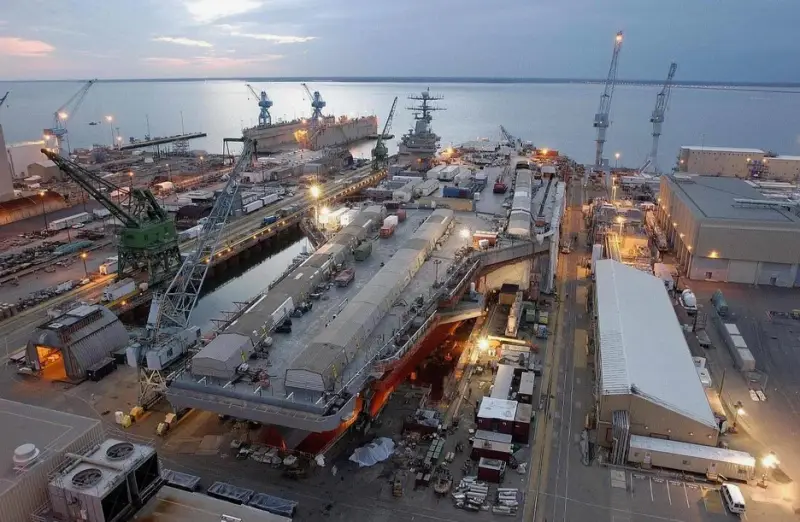
The next obvious question would be to build more aircraft carriers. However, there are several factors why this doesn't even come close.
As Brandon J. Wechert noted last month in The National Interest:
Weichert added:
In other words, the United States cannot afford to lose such an important target in the war, but it also cannot afford to build more. And that only takes into account the monetary value. The United States Navy has another problem: recruit quotas. A very big problem: replenishment of fleet personnel.
The Navy really barely has enough sailors to operate its current fleet, which is the smallest since World War I. However, short of conscription, it is doubtful that the US Navy will have the sailors for even a few additional aircraft carriers, given that we are talking about thousands of trained sailors.
America can barely build its current aircraft carriers.
The final consideration is that modern aircraft carriers take years to build, and even if the US suddenly had the money and manpower, it would not have the capacity to build any additional aircraft carriers.
In January, the Aircraft Carrier Industrial Bases Coalition (ACIBC) warned of rough waters ahead following a survey conducted last November. The trade association represents nearly 2000 suppliers from across the country that make up the supply chain for Huntington Ingalls Industries (HII), the largest military shipbuilder in the United States.
These companies provide parts and services for the construction and maintenance of US Navy aircraft carriers, and according to the survey, this is a critical time for the industry as 95% of suppliers have faced rising cost issues due to inflation, while 79% have faced rising costs raw materials by at least 7%. More than one in 10 (91%) suppliers surveyed said they had experienced problems as a result of material availability or delivery, and 76% said they had directly experienced an increase in the amount of time it took to create and ship their products.
Workforce issues also remain a major concern, with 85% of firms saying they continue to face challenges recruiting, training and retaining their workforce. Moreover, 32% of those surveyed said labor-related issues had a negative impact on firms' ability to fulfill contracts.
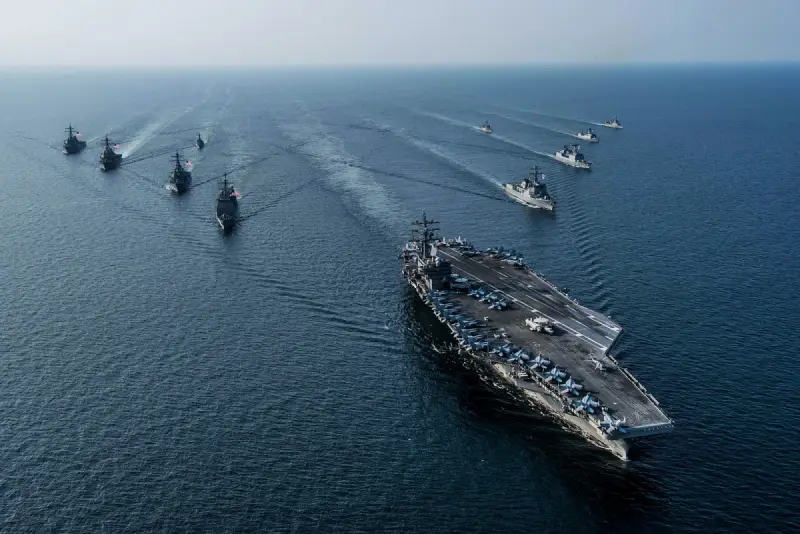
Conclusion: The US Navy is dispersed and it is very doubtful that it will be able to represent a single fist. Well, except in very critical situations. Future Ford-class aircraft carriers are already behind schedule, not only in terms of timing, but also in terms of costs. The lead ship of this class has already shown how it is possible to exceed estimates and ruin budgets. The Navy is already scaling back its mid- and long-term projects to focus on the near term.
This will mean relying on the carriers the U.S. Navy already has and hoping that there won't be multiple crises and that no ships will suddenly be lost due to odds. And such circumstances may arise, especially in conflicts with Russia and China in the Pacific Ocean. And the loss of even one aircraft carrier (which, we note, is very possible with the modern weapons systems of Russia and China) will be a shock for the United States, quite comparable to Pearl Harbor.
Information